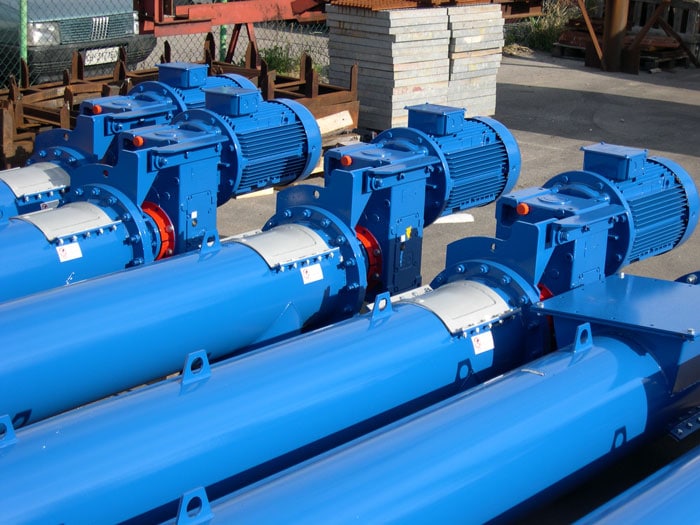
When you think of a conveyor system, there are many environments that come to mind. From airports to supermarkets, factories and postal rooms, they have a wide variety of uses and come with a plethora of benefits. First and foremost they transport materials from one point to another and can handle both heavy loads, bulky packages and large quantities of goods all in one go. When looking to choose the right conveyor for your needs it’s essential to think about the output you want to achieve, the volume of goods that will be transported by the conveyor belt systems and your budget.
Gone are the days of slow-moving materials being transported from one location to another, conveyor systems help to automate this step as a vital piece of mechanical handling equipment that can be adapted to many set-ups to serve a variety of purposes.
Consisting of interconnected components that function together to move materials, the belts, roller, chains, pulleys and motors, are the main features of the device. Starting with a loading or input point the goods are placed on the belt of the conveyor, either by hand or with an automated system, for its onward journey. Built with a continuous loop of material made of either metal, fabric or rubber to carry the goods, it’s operated by a motor that powers the belt. When powered rollers or a chain conveyor are installed, they’ll be driven by rotors to help support the belt speed as it consistently moves along. A guidance system is there to make sure that the goods are heading to their designated destination along the correct path with either sensors, chutes or rails to keep them on track. Meanwhile, a control system is there to detect when items are present and if the machine needs to stop at a moment’s notice. Common types of conveyor systems have speed and direction controls that can be adjusted by the operator and more technically savvy variations can be equipped with sorters and diverters that can sort items based on their criteria. At the end of the conveyor, the goods will be delivered and dismounted either by hand or with an automated process.
With an impressive range of conveyor systems on the market, it’s important to do your research or ask experts in the field who will be able to advise on which device is best for your needs. Each can be made bespoke to your exact specifications to fit into your designated location with ease whilst improving overall efficiency in the long run. Here are a variety of the systems available that can assist with your material handling:
The notion of a conveyor moving items from one spot to another in no time is certainly an advantage thanks to its efficiency and effectiveness in getting results fast with its automated system. Not only does this deliver higher output and increased operational results, but it also means that there is a consistent flow of goods moving around whilst eliminating bottlenecks and any interruptions which can be a downside of manual labour. Transporting the materials in a direct fashion also reduces the time needed for loading, unloading and transfer with accuracy and precision without the need for any manual adjustments or the risk of damage being caused in transit. By reducing the amount of manual handling required for the job, the functioning environment is a much safer place because conveyor systems take away the stress of individuals handling heavy or hazardous materials.
With enhanced technical features you’re able to track and identify what items are going where to help streamline the process and increase quality control as they can be equipped with monitoring devices and sensors to track the quality of a product or detect if there are any faults during transit. Finally, their ability to adapt in size and shape means that they can be modified as business needs change, thus making them a fantastic solution for operations of all types.
When looking to invest in a conveyor system it’s important to consider a number of factors when making your final decision.
Firstly you need to identify your business requirements and what the ideal production rate you would like to achieve is. This also needs to factor in the materials you intend on handling as well as the dimensions, weight and size of the materials. Next, it’s essential to measure up the venue your new conveyor will be installed in. Make sure to measure the floor and ceiling space and height and take note of any obstacles or existing equipment that may make the installation process challenging. Will the conveyor be designed with inclines, declines, curves, or in a standard straight line? Think about what material the conveyor will need to be and how it will adapt to the materials being transported in terms of temperature sensitivity, abrasiveness and fragility, as well as maintaining the device for incidents of dust, spillages and cleaning requirements. With a wide catalogue of systems to choose from, take time to consider which one is best for the application for either sorting, accumulation, transport, or other tasks. Does it need to be operated manually, or function automatically whilst integrated with other equipment such as sorting machines or robotics to streamline the process even further? Also, think about the future and if your business will need to plan for expansion if you have more demand for your products. Finally, your budget for the product itself and the installation is key. Compare the potential return on investment against savings on employment and efficiency gains to help your decision. There are always great reviews online and in-person experts who can assist with this process in order for you to make the right choice.